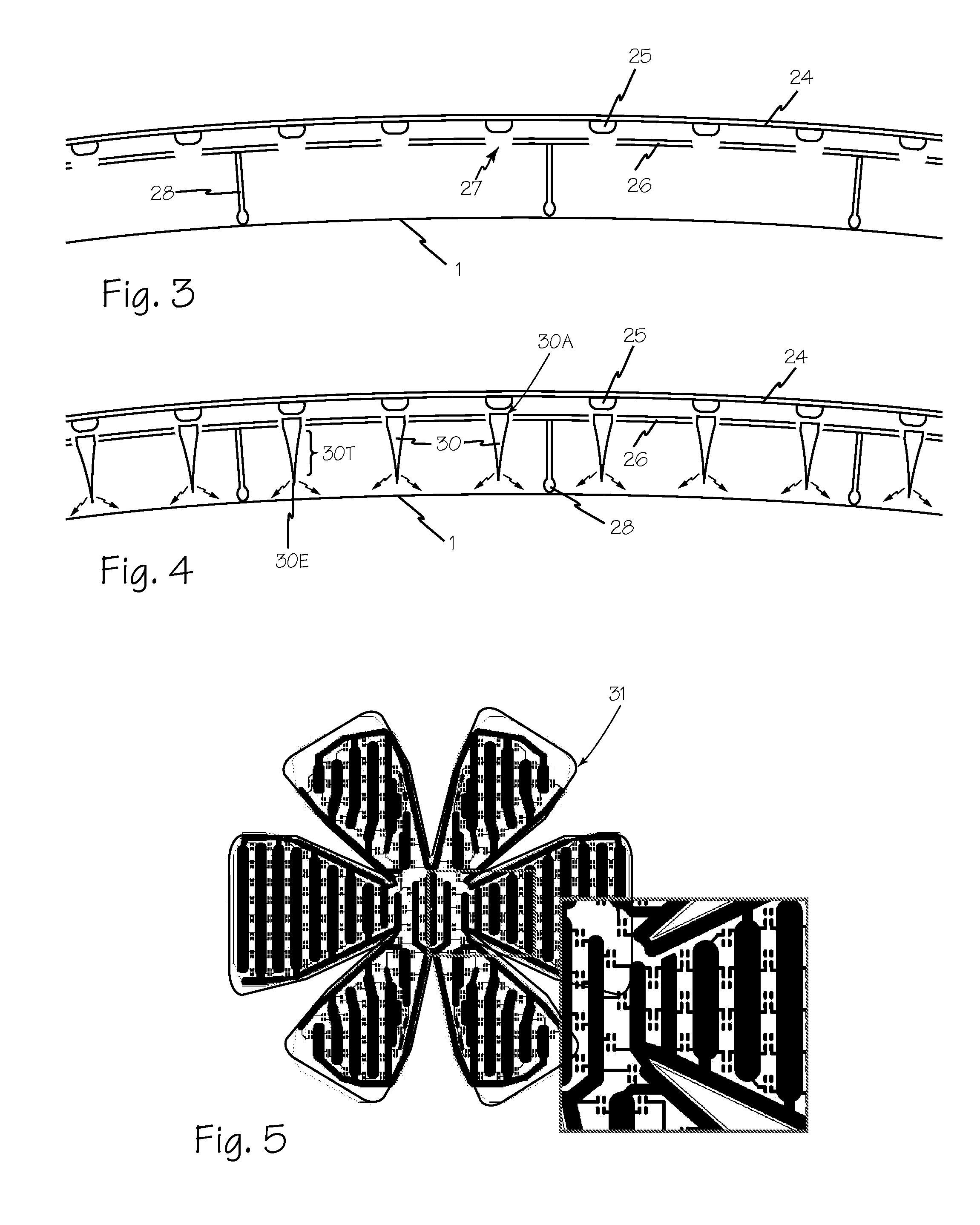Methods, Compositions and Apparatus for Treating a Scalp
a technology for scalp and composition, applied in light therapy, electrotherapy, radiation therapy, etc., can solve the problems of reducing the beneficial effect of lllt, reducing the efficiency of lllt treatment, and reducing the effectiveness of lllt, so as to improve the effect of lllt treatment, facilitate the application of scalp, and optimize the flow of therapeutic compound
- Summary
- Abstract
- Description
- Claims
- Application Information
AI Technical Summary
Benefits of technology
Problems solved by technology
Method used
Image
Examples
Embodiment Construction
[0037]Cap 10 of FIGS. 1A, 1B and 1C includes cover 11 protecting and shielding illumination array 12 and diffuser 14 which combine as therapy insert 15. Cap 10 may be powered by one or more rechargeable batteries such as batteries 16 and controlled using switch 17 which may be secured to hat brim 19 along with microcontroller or microprocessor 20. Batteries 16 may be recharged through a button connector / interface such as connector 22. The power source, power controller and switch may also be separated from the therapy insert and provide the electrical power through any suitable tether.
[0038]As shown in FIG. 2A, the phototherapy insert includes several triangles, segments or gores 23A, 23B, 23C, 23D, 23E and 23F that may be secured at their edges to form a generally hemispherical cap. The illumination arrays in each gore such as array 12 are generally identical although they may have some differences such as one segment powering or controlling one or more slave segments. Each illumin...
PUM
 Login to View More
Login to View More Abstract
Description
Claims
Application Information
 Login to View More
Login to View More - R&D
- Intellectual Property
- Life Sciences
- Materials
- Tech Scout
- Unparalleled Data Quality
- Higher Quality Content
- 60% Fewer Hallucinations
Browse by: Latest US Patents, China's latest patents, Technical Efficacy Thesaurus, Application Domain, Technology Topic, Popular Technical Reports.
© 2025 PatSnap. All rights reserved.Legal|Privacy policy|Modern Slavery Act Transparency Statement|Sitemap|About US| Contact US: help@patsnap.com



